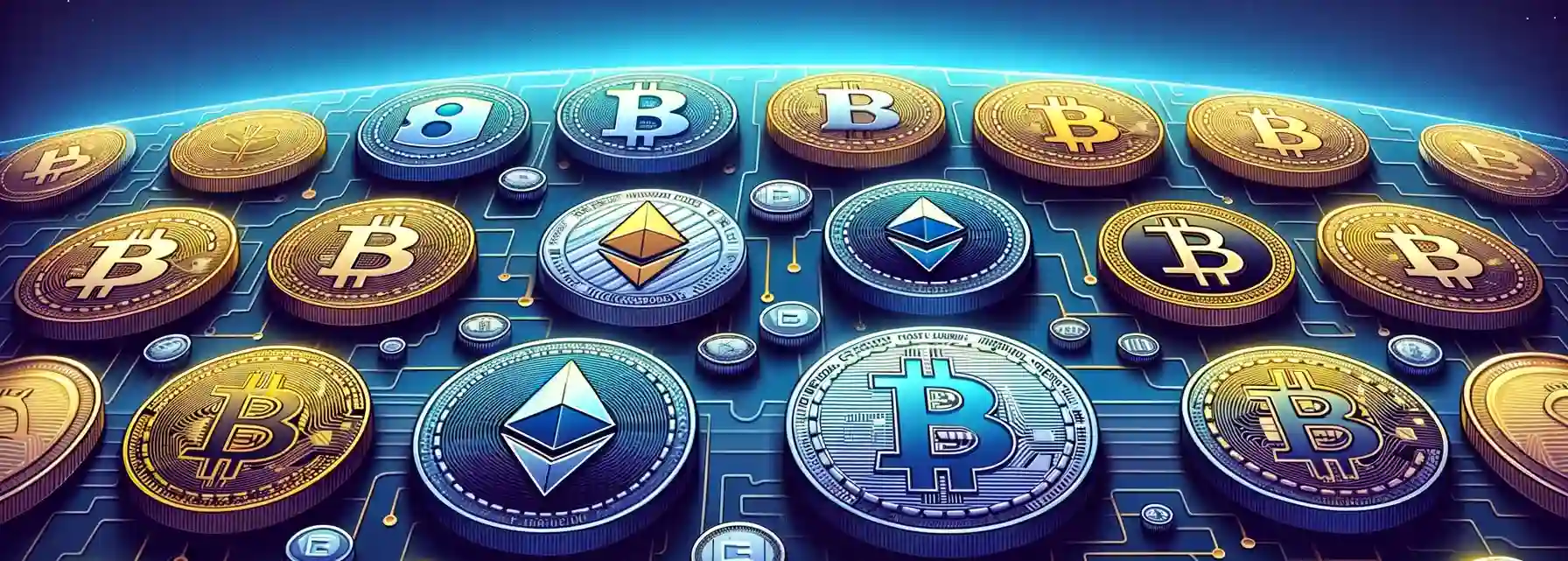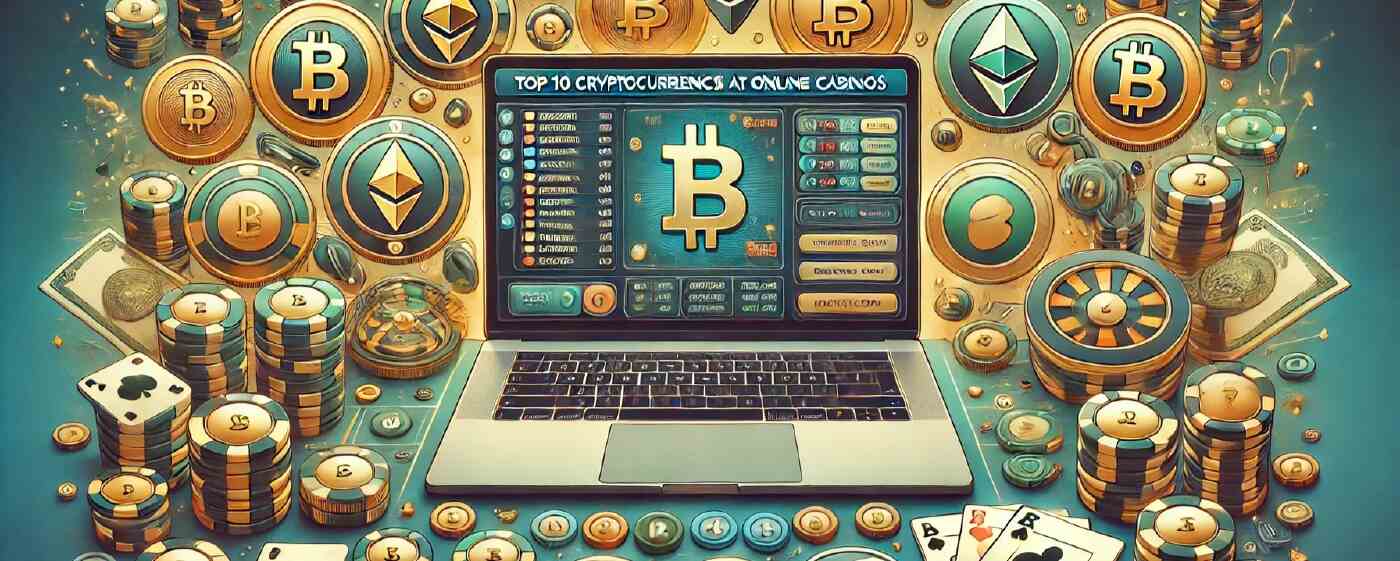Altcoin Explained: A 2024 Guide to Cryptocurrency Beyond Bitcoin

Table of Contents
Even though Bitcoin is the first, oldest, and most well-known coin, there is a whole world of others digital currencies out there. In fact, there are over 23,000 cryptocurrencies in existence today other than Bitcoin, and each is considered an altcoin. In this article, you will find out:
- What are altcoins?
- Types of altcoin
- Differences between Bitcoin and altcoin
- Pros and cons of altcoins
- Top altcoins to buy
Keep on reading for more.
What Is an Altcoin?
Altcoins are defined as any cryptocurrencies other than Bitcoin. The term “altcoin” is a portmanteau of “alternative” and “coin”. Simply put, altcoins are alternatives to Bitcoin. Some consider them to be an alternative to Ethereum, while others view it as the biggest altcoin of them all.
This confusion is because Ethereum also introduced new ideas and functionalities to blockchain, allowing for the creation of smart contracts and decentralised applications (dApps). Altcoins were invented to improve upon Bitcoin’s blockchain’s existing features and limitations.
| 💡 Did You Know: | The first altcoin to emerge as an alternative to Bitcoin was Namecoin, which was introduced in 2011. |
Since nearly every active altcoin brings something unique, whether it’s better transaction speed or energy efficiency, every crypto investor and enthusiast should know how they work, what they are used for, their types, as well as the best altcoins you should buy, as shown in our video:
Types of Altcoins
There are multiple different altcoin categories and types, depending on how they work and what they are used for. Here are the main altcoins you need to become familiar with:
Stablecoin
Stablecoins are coins pegged to the price of another asset to minimize the volatility typical of digital coins and crypto assets. The majority of top altcoins are tied to the value of the US dollar, but altcoins can also be pegged to the price of other fiat currencies, such as the Euro, or even commodities, like gold or oil.
Obviously, the name comes from their stable value, which makes them ideal for daily transactions and payments, or even as a safe haven in volatile markets. They are also a great choice to be used for savings. Conversely, they are not a popular choice for investment due to their stable price.
The most popular one is Tether (USDT), which is tied to the value of the US dollar, and is often a stablecoin of choice for trading and hedging. Another stablecoin that needs to be mentioned is Dai (DAI), which runs on Ethereum’s blockchain, also pegged to the US dollar, but is backed by Ether.
Proof of Work Coins
PoW or mining-based altcoins utilize a process called mining to validate transactions and increase the supply of coins in circulation. Crypto miners use devices and rigs with significant computing power to solve complex mathematical equations.
Usually, the first miner to successfully solve the equation is granted the right to verify a block of transactions and receive crypto as a reward. Bitcoin introduced this method to the market. One of the main disadvantages of PoW altcoin is the power consumption needed to solve the mathematical puzzles.
The most well-known altcoins include Litecoin (LTC), Dogecoin (DOGE), ZCash (ZEC), Monero (XMR), and Bitcoin Cash (BCH).
Proof of Stake Coins
PoS or staking-based altcoins rely on the process called staking for transaction verification and the creation of new coins. Altcoin holders stake their cryptocurrency assets, similar to clients leaving deposits in a bank in order to earn interest, so they can be utilized for transaction processing.
The validator is then chosen to validate a block based on factors such as the amount staked and their time online. In exchange for their work, they receive a crypto reward. The first PoS altcoin was Peercoin. Although not a very well-known coin, it nonetheless introduced staking as a more energy-efficient process than mining.
The most popular PoS coins are Ethereum 2.0 (ETH), Cardano (ADA), Polkadot (DOT), Solana (SOL), Tezos (XTZ), Algorand (ATOM, and Cosmos (ATOM).
DeFi Coins
DeFi (short for Decentralized Finance) altcoins are used to recreate traditional financial systems and institutions such as banks and exchanges using blockchain technology. They utilize smart contracts on blockchains, with Ethereum being the most popular choice.
DeFi altcoins aim to replace old concepts like banks with peer-to-peer financial services, including loads, mortgages, and everyday banking, as well as more complex transactions like asset trading.
The most notable DeFi altcoins include Ethereum (ETH), Maker (MKR), Dai (DAI), Uniswap (UNI), Aave (AAVE), Compound (COMP), and Curve Finance (CRV).
Governance Coins
With governance coins, crypto holders can be given voting rights in order to participate in the decision-making process in regards to how a particular project will develop. This enables the community to vote on important matters without relying on centralizes authority or governance.
They are also a crucial element of numerous DeFi projects, dApps, and DAOs (Decentealized Autonomous Organization), and just about any other application that aim to function in decentralized, open, and community-driven manner.
Notable examples include Maker (MKR), Aave (AAVE), Compound (COMP), Uniswap (UNI), Curve Finance (CRV), Synthetic (SNX), and Yearn.finance (YFI).
Utility Coins
These altcoins are designed to provide access to services and functionalities within a blockchain network. This might include anything from paying network fees to purchasing services. Although utility tokens can be held after their purchase, they are meant to be used in a way that keeps the blockchain running.
For instance, Ether, which runs on the Ethereum blockchain, is used as a means of payment for transactions in the blockchain and virtual machine. Another example is TerraUSD (UST), which was a coin that relied on utility tokens to peg its value to the dollar.
Utility coins can also be used to purchase storage space on a network and keep the information safe, which is the case with Filecoin.
| ⚠️ Note: | Another altcoin type is meme coin, which is centered around internet memes and pop culture references. Dogecoin (DOGE) and Shiba Inu (SHIB) are the most notable meme coins. |
Bitcoin vs. Altcoin: What Are the Differences?
There are multiple ways in which Bitocin and altcoins differ from each other, including their purpose, origin, and technology, as well as both Bitcoin and altcoin market cap, Check out this detailed comparison of the two:
Altcoin Origin vs. Bitcoin Origin
Bitcoin was launched in 2009 by an individual or a group of individuals under the pseudonym Satoshi Nakamoto. It’s considered a progenitor of digital cryptocurrencies that use blockchain technology.
Altcoins were created to expand and improve upon Bitcoin features and to explore additional applications that go beyond what Bitcoin was originally intended for. As we’ve mentioned previously, the first altcoin, Namecoin, was invented in 2011.
Technology and Consensus Mechanism
When it comes to consensus mechanisms, Bitcoin uses Proof of Work (PoW) to keep its blockchain secure and validate all the transactions. Despite the fact that this type of consensus mechanism is very secure, it’s also come under criticism because it consumes a lot of electricity and because of the relatively slow speed of transitions.
Altcoins have introduced a number of innovations and improvements on the blockchain and consensus mechanism side of things, including those that are designed to address the most common shortcomings of the PoW model used.
The biggest altcoin, Ethereum, has transitioned to the Proof of Stake (PoS) consensus mechanism, which is a lot more energy-efficient and features quicker transactions. Also, there are altcoins that use delegated PoS or Proof of Authority mechanisms for different purposes, such as scaling or improving security.
Purpose and Application
Bitcoin was born as an alternative to traditional currencies, mainly out of frustration with banks and financial institutions during the global economic crisis in 2008. Also, its aim was to remove centralized intermediaries altogether and enable peer-to-peer transactions. Gradually, it has become a means of storing value digitally, and is sometimes thought of as “digital gold”.
Altcoin cryptocurrencies can have a much wider spectrum of application and use cases. For example, some aim to be faster and more scalable forms of digital cash, which is the case with Litecoin or Bitcoin Cash. Others, like Ethereum, are designed for very specific purposes, such as dApps.
Finally, coins like Monero and Zcash have been created to enable transactions that prioritize privacy, or to support the DeFi system, which is the case Uniswap and Aave.
Market Influence
As the most widespread and popular coin, it has a huge influence on the entire crypto market and its dynamics. For instance, the upcoming Bitcoin halving in April has everyone paying attention, since its price before and after the halving can also significantly impact altcoin price.
While some altcoins tend to follow Bitcoin price changes and trends, others are more impacted by new technological developments, altcoin news, or even how the how the market views their specific niche. In other words, the altcoin market is way more fragmented than that of Bitcoin and can act in a more volatile manner.
Adoption Levels and Liquidity
In terms of liquidity, Bitcoin takes the top spot on the cryptocurrency market, and as a result, it can easily be sold, bought, or traded without significantly impacting the price. It is also widely adopted as a means of cross-border transactions and investment and is also accepted by merchants.
By contrast, there are huge gaps in liquidity and adoption among different altcoins. Top altcoins such as Ethereum, Ripple, and Litecoin enjoy significant liquidity and are accepted for a variety of uses. However, fairly new or small altcoins have their work cut out for them if they want to gain widespread adoption or improve their liquidity.
Pros and Cons of Altcoins
The altcoin landscape is extremely diverse, which means that it features many currencies with significant pros and cons in comparison with Bitcoin.
Advantages of Altcoins
-
- Innovation – They have improved upon the original idea of Bitcoin by introducing new features and technology, such as better scalability and privacy, and dApps, just to name a few.
- Lower entry cost – The majority of altcoins are cheaper than Bitcoin, which makes them very accessible to new investors and enthusiasts. Also, their affordable price enables you to easily diversify your crypto investment portfolio.
- Possibility of high ROI – Historically speaking, there have been altcoins that have seen huge surges in value, which have resulted in significant returns on investment, especially for early investors.
- Specific use cases – They are usually created to target very specific uses or niches, such as supply chain management, digital identity, decentralized finances, and so on.
Disadvantages of Altcoins
-
- Higher risk and volatility – Altcoin price is more susceptible to market sentiment, regulatory altcoin news, and project-specific developments, which can lead to significant ROI or huge losses.
- Market manipulation – In case of smaller altcoins with low trading volumes, pump-and-dump schemes are not uncommon.
- Low adoption level – Even though there are plenty of altcoins that offer innovative features and solutions, not all of them reach widespread adoption, especially if they don’t have any real-world use.
- Competitive market – New altcoins emerge all the time, and the competition is fierce, so they need to stand out and innovate to avoid becoming obsolete over time.
Top 10 Altcoins to Buy in 2024
It’s somewhat difficult to give our predictions about the best altcoins to invest in due to price volatility. However, there are some parameters that can help your choice a lot easier, such as altcoin currencies featuring innovative technology. Here are the best altcoins to buy in 2024:
-
- Ethereum (ETH)
- Binance Coin (BNB)
- Avalanche (AVAX)
- XRP (XRP)
- Cardano (ADA)
- Polkadot (DOT)
- Solana (ADA)
- Dogecoin (DOGE)
- Shiba Inu (SHIB)
- U.S. Dollar Coin (USDC)
Navigating the Road Ahead: The Future of Altcoins
As you can see, the altcoin ecosystem is incredibly large and diverse, with over 23,000 alternative cryptocurrencies battling not only for a larger market cap but also for their chance to introduce new ideas and innovation.
From dApps to staking, altcoins cater to different needs and niches and improve upon Bitcoin’s limitations. We hope that we have succeeded in helping you learn about altcoin, its types, applications and advantages.
Despite all the volatility, risks, and regulatory uncertainties, it is immediately obvious that the pros of altcoins outweigh the cons by a huge margin, which makes them essential for the future of cryptocurrencies and blockchain alike.







